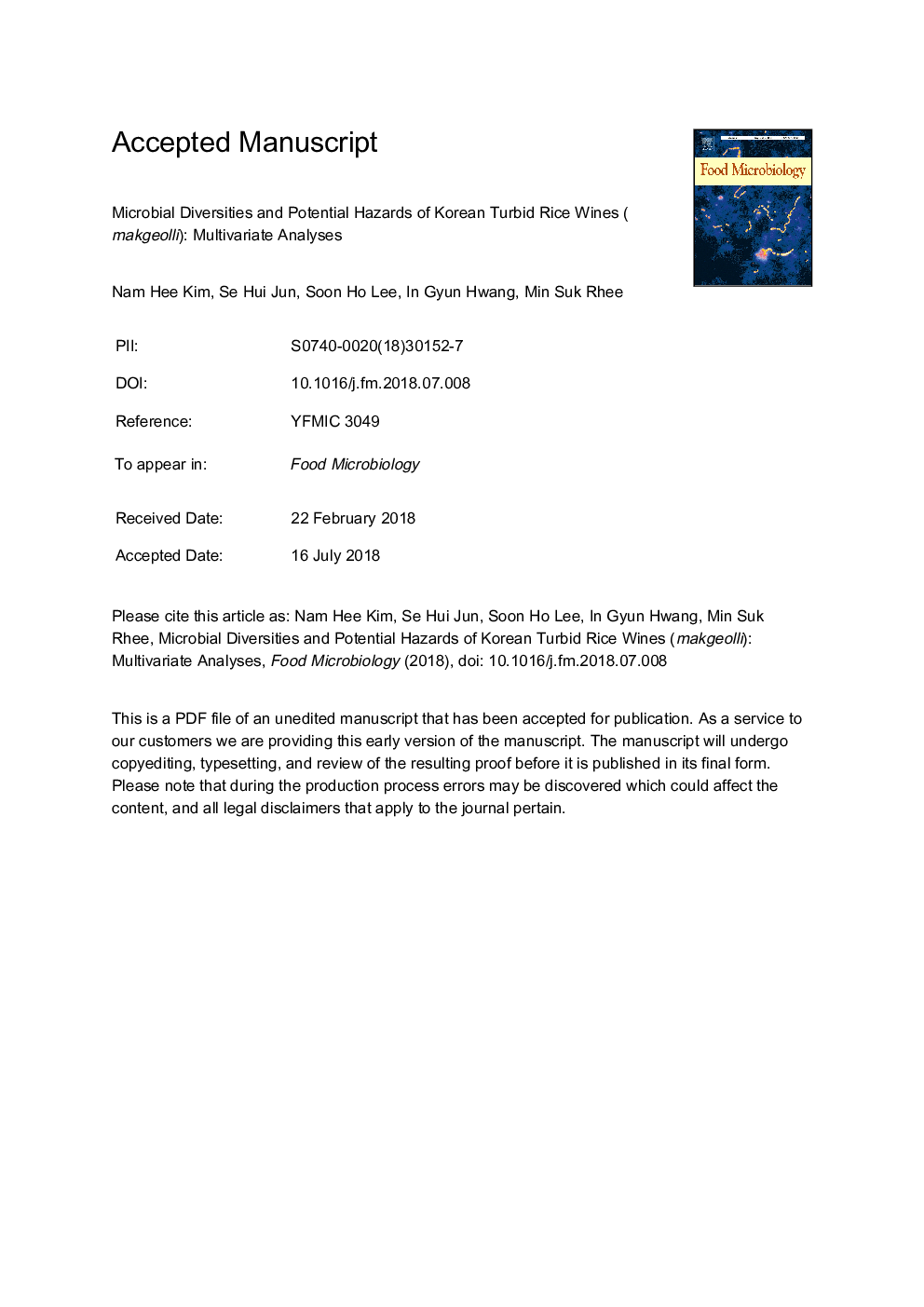| کد مقاله | کد نشریه | سال انتشار | مقاله انگلیسی | نسخه تمام متن |
|---|---|---|---|---|
| 8843463 | 1616225 | 2018 | 30 صفحه PDF | دانلود رایگان |
عنوان انگلیسی مقاله ISI
Microbial diversities and potential hazards of Korean turbid rice wines (makgeolli): Multivariate analyses
ترجمه فارسی عنوان
تنوع میکروبی و خطرات بالقوه شراب های برنج کثیف کره ای (ماگژلی): تجزیه و تحلیل چند متغیره
دانلود مقاله + سفارش ترجمه
دانلود مقاله ISI انگلیسی
رایگان برای ایرانیان
کلمات کلیدی
موضوعات مرتبط
علوم زیستی و بیوفناوری
علوم کشاورزی و بیولوژیک
دانش تغذیه
چکیده انگلیسی
A number of makgeolli (Korean traditional turbid rice wine) products are commercially available in various forms. To date, there has been no comprehensive investigation of these products. Here, we collected samples of almost all of the makgeolli products that are currently commercially available (nâ¯=â¯167), recorded their manufacturing variables, and examined physiochemical parameters and microbial communities, using quantitative and qualitative methods. The aerobic plate count (APC) and counts of lactic acid bacteria (LAB), acetic acid bacteria (AAB), fungi, total coliforms, and Bacillus cereus were obtained, and the presence of Escherichia coli and eight foodborne pathogens was also examined. The data obtained were segmented and analyzed based on multiple variables associated with the manufacturing characteristics. Despite high ethanol contents (up to 16.0%) and high acidities (pH 3.3-4.5), the rice wine products examined here had diverse and abundant microbiotas (mean values: APC, 5.3; LAB,4.4; AAB,1.5; fungi, 3.8 log CFU/ml). In particular, LAB and fungi, which are used as co-starter cultures during rice wine manufacturing, accounted for the majority of the microbiotas. Bivariate analyses revealed significant positive correlations between the individual micro-organism counts (Pearson correlation coefficientâ¯=â¯0.668-0.947). Among the manufacturing variables considered in this study, only the pasteurization status had a significant effect on the microbial communities of rice wine products (pâ¯<â¯0.05). When examining the presence of foodborne pathogens, B. cereus was isolated from some of the rice wine products (58.1%) at low levels (<100â¯CFU/ml), and its detection rate was not significantly lower in the pasteurized products than the raw products. Overall, the results presented here provide a comprehensive overview of the microbiotas of commercially available turbid rice wines and their relationships to manufacturing variables. These data will help to direct future studies focusing on rice wine quality and safety control measures.
ناشر
Database: Elsevier - ScienceDirect (ساینس دایرکت)
Journal: Food Microbiology - Volume 76, December 2018, Pages 466-472
Journal: Food Microbiology - Volume 76, December 2018, Pages 466-472
نویسندگان
Nam Hee Kim, Se Hui Jun, Soon Ho Lee, In Gyun Hwang, Min Suk Rhee,
